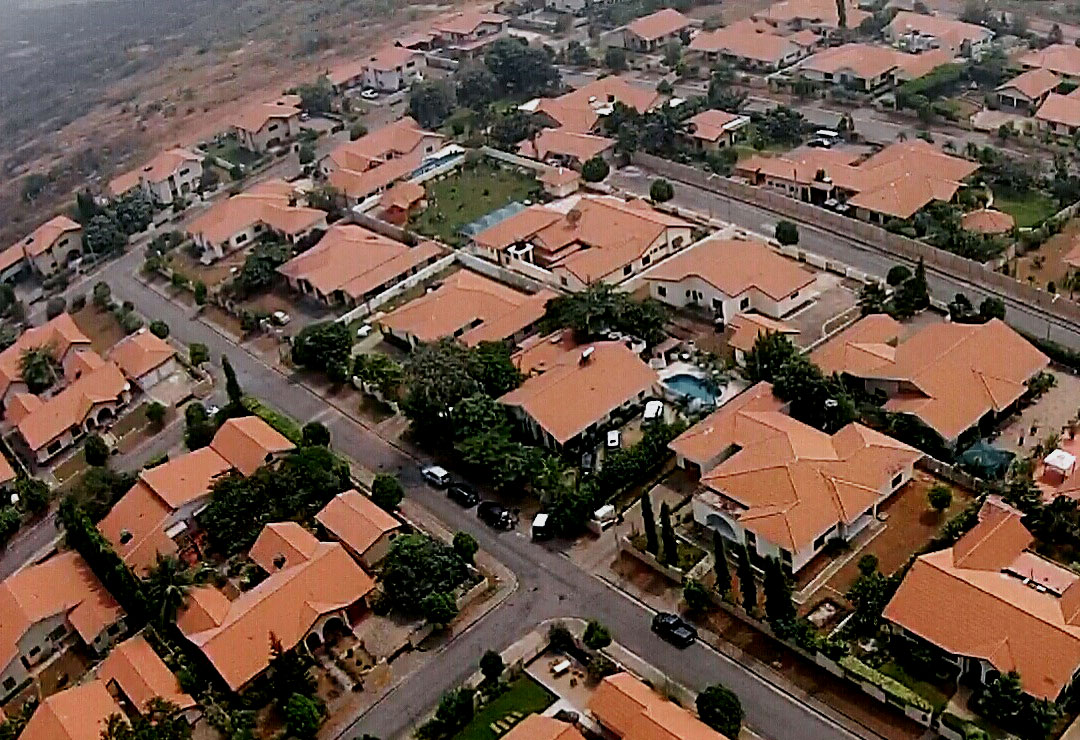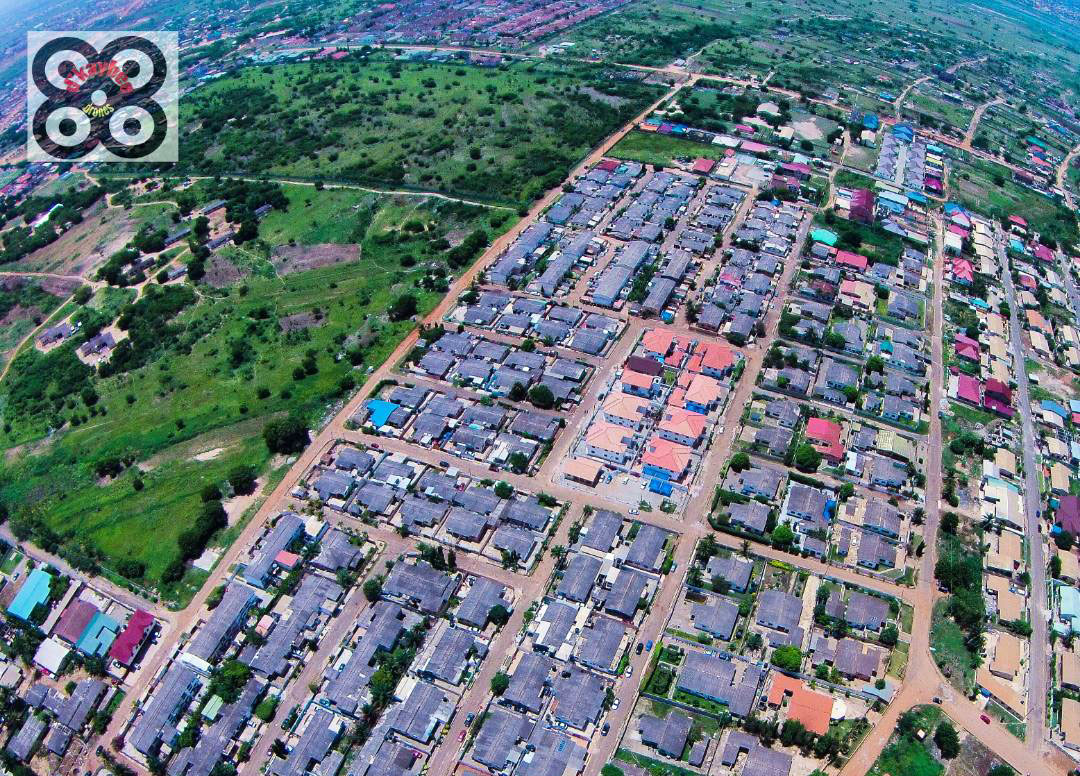On 5 September, 2005 Egg Mag’s Editor and Publisher wrote an article about the state of housing estates in Ghana’s Daily Graphic newspaper. We re-publish (with edits) this article in our publication as the back-step in our leap towards addressing and presenting a series on housing estate solutions and opportunities.
When now this article has a new title, please note that it was initially published under the following title – “Are our development plans, designs functional?”
We’ll endeavor to offer enterprising solutions and will continue to follow through with actions that ought to make the private housing estate market full of promise, where before it appeared to be on a road to perdition.

Ghana’s real estate developers are diving headfirst into housing estate schemes; and their consumers to whom they are marketing their products are correspondingly gobbling them up. Sprouting all over Accra and many other municipalities are a fertile crop of housing estates that are purposely designed for the Western-leaning, modernity-aspiring Ghanaian.
Developments (incomplete) with Western names play into the idea that one can—indeed one must—live like some Westerners do: in sterile enclaves. America’s subdivision idea is being imported en masse to the developing world. From Freetown to Accra, estate developments are becoming socially bankrupt and design-deficient housing hives that are a disgrace to good planning and architecture. They are also pestiferous to societal living.
These developments of lackluster spatial planning as well as uninspired design largely function as vehicular mazes and as constellations of claustrophobic housing lots. Practical spaces for living, they are not. Gated in within their larger confines, a family can expect to drive through—their guests will have to navigate—a guard post and a web of roads plus their accompanying speed bumps in order to get to fortified homes that are choking on slick tiled floors as well as being equipped with nondescript living spaces that come replete with en vogue handwashing basins.
Fault for all the above should be shared by developers, built environment professionals and, yes indeed, homebuyers/owners. There is a drug infestation on hand, if you will – with developers as if zealous pushers and built environment professionals behaving like languid law enforcers; add to them a pool of aspiring homeowners as comatose addicts. All too often estates are planned by opportunistic non-professionals. Thereupon, built environment professionals are providing no leadership, and thereafter consumers are blindly and insistently buying into these fashionable estates.
The effect? – Estates are oozing symptoms of bad design, planning and management. Per these examples (and they’ll remain unnamed), the following specific symptoms may be cited: one, an estate developer bowed to homeowners’ pressures to dispose of their well-functioning water utility service owing to cost stress. (Ghana, may it be noted, suffers intermittent water outages to this day); two, another developer successfully promoted a private clubhouse complex to homeowners that is also proving to be too expensive to maintain; and three, yet another developer is providing piecemeal amenities per sale volumes achieved. This means that the achievement of a fully-equipped estate will be contingent on the sale of all lots and units. Therefore,—one must so ask—should current homeowners be temporarily (or perhaps permanently) disenfranchised?
Being the half-baked concepts that they often are, it is evident that these schemes are not taking into consideration the entire scope of an estate’s conception, development and functioning. Many a development, seemingly and inconceivably, are intent on constricting movement about-and-through a sector of an urban space. An example of this is Accra’s Spintex Road. Additionally, one too many developments may be considered incomplete in more ways than one – for example, they are dotted with vacant lots or incomplete houses as well as half-populated by absentee owners. These owners partly comprise the ranks of loosely-organized and poorly-resourced resident associations.
These developments are sprouting like weeds and they are as much an irritant as other remains of improper human settlement living; for example, plastic litter and noise pollution.
Some estate developments are however showing a bit of promise, insufficient as this might currently be. One estate is adopting waist high walls whilst another is incorporating a convenience store on its outskirts. The need for ‘opening up’ a development is acknowledged by these actions. Estates need not be fortified islands. They should be allowed to breathe. They should avail themselves to their larger surroundings. To do otherwise stifles interconnectivity and makes rife alienation.
The following questions may be posed given this call to ‘open up’ these constricting estates:
[1] Will it not be better to locate communal socioeconomic facilities that will ultimately have to rely on income generation on the periphery of developments so that their sustainability may rely on more than just the select few who reside within its confines? May Le Corbusier’s Unite d’habitation serve as the bad example of old?
[2] Doesn’t the idea of Legon (a university campus in Ghana)—with a few minor adjustments—work as an alternative to the claustrophobic estates of today? Lastly,
[3] Why can’t estates cater to residents’ need for absolute privacy (and their collective need to mark their territories) with fences and/or hedges; and go a step further by dotting their lots and larger landscapes with trees?
It is lamentable that developments, especially the sizeable ones, do not provide ample green spaces for recreation and leisure. The social platters of these developments are also devoid of amenities that invite interaction – kelewele stands are absent (Are they are gauche for these types of settlements?); public benches are ‘invisible’ and pick-up and drop-off counters for laundry/dry-cleaning and other such services are missing.
Estate developers ‘sell the car’ whereas they ought to factor in the post-sale maintenance services as well.
One must also wonder if homeowners are fully aware of post-sale obligations. After all, each one of them is buying a slice of a private facility that includes not only a private residence but also a network of roads, utilities and other capital improvements that will require maintaining into the future. One must further ask: Are the post-purchase obligations and their associated costs and requisite management schema fully intelligible to owners? Are they effective? Are homeowners properly representing themselves in the process? Homeowners must ask themselves whether they are fully aware of their estate’s maintenance requirements. They should ascertain whether all future obligations assigned to them are readily apparent. They should know that between themselves and their neighbors they are financially capable of fixing their roads and many other such amenities and facilities.
A more fundamental question which each aspiring estate homeowner should ask themselves is: What propels me to buy into the type of developments that are currently up for offer, especially when my roles and responsibilities pertaining to the long term sustainability of such an estate are vague? Then also, built environment sector functionaries (e.g. developers, architects and planners etc.) ought to be asking themselves whether this estate development model as previously described and contextualized is technically optimal and socially suitable for society.
The opportunity to properly shape Accra’s future is being squandered. Trophy estates abound in Ghana; do well designed and properly functioning ones? Claustrophobic and stifling human settlements must not be the order of the day in contemporary Ghanaian urban society. Our homes must breathe; our leisure spaces must be ample and aerated; our places of refuge must not be constricting. Up till now, they have been hardly that.
The opportunity to properly shape Accra’s future is being squandered. Trophy estates abound in Ghana; do well designed and properly functioning ones? Claustrophobic and stifling human settlements must not be the order of the day in contemporary Ghanaian urban society. Our homes must breathe; our leisure spaces must be ample and aerated; our places of refuge must not be constricting. Up till now, they have been hardly that.

Postscript: We will be publishing a second addressing of this issue in our pdf/Policy Discussion Forum section. This document will detail how Buildberg proposes to and is pursuing how to address housing estate resiliency. We will fully welcome your interest, feedback, participation and support.

